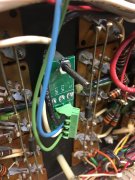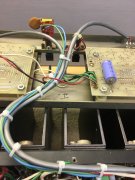Oldskoolfan
Journeyman
You talking about that Kenwood KR-9600 thread over at Audiokarma? I read through that whole thread when I restored my 9600. They showed how to do the triac trick. That was the only part of that thread I didn't do. Knowing I was selling it at the time I said fuck it. No need going any further. That was one bad ass unit.
Honestly don't recall.
Wanted to go back to it and can't find it now. Don was involved in it quite a bit.


